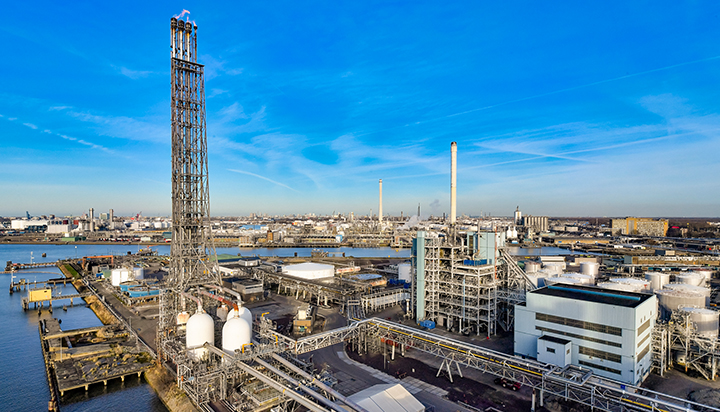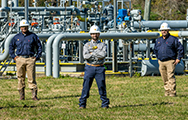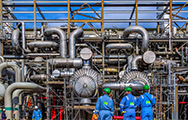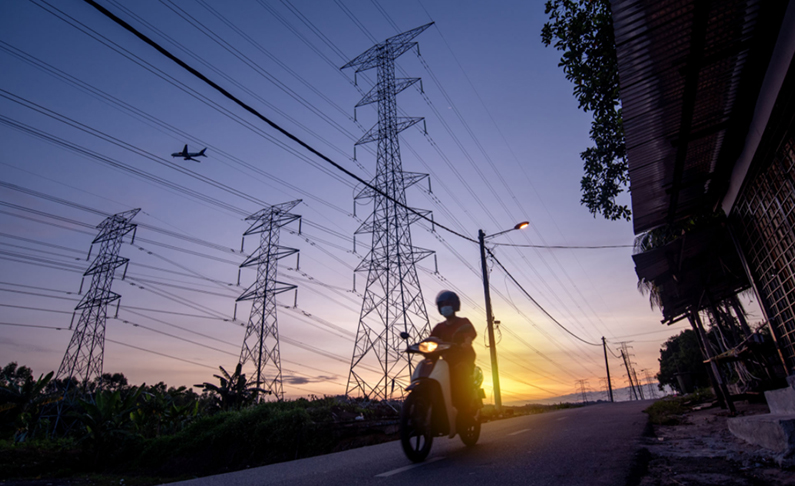Flaring
We are working to reduce flaring, which contributes to climate change and wastes valuable resources.
Flaring is the controlled burning of natural gas and is a common practice in oil and gas exploration, production and processing operations. Flaring is used to safely dispose of hydrocarbons that could pose a hazard to workers, nearby residents and facility equipment if there is a lack of equipment to gather the gas. Flaring can occur during start-ups, maintenance turnarounds and power failures, where production system pressure must be safely relieved.

We may use flaring at facilities, such as our Pernis refinery in the Netherlands, if required to safely relieve production system pressure.
Gas routinely produced with oil, known as associated gas, may also be flared. As a signatory to the World Bank’s Zero Routine Flaring by 2030 initiative, we continue to pursue our 2015 commitment to eliminate associated gas flaring at our facilities.
Flaring performance
Flaring of gas in our Upstream and Integrated Gas businesses contributed around 6% to our overall direct greenhouse gas (GHG) emissions in 2020. Around 35% of this flaring occurred at facilities where there was no infrastructure to capture the gas produced with oil, known as associated gas. Overall flaring decreased to 3.8 million tonnes of carbon dioxide equivalent in 2020 from 5.9 million tonnes of carbon dioxide equivalent in 2019.
Flaring – upstream hydrocarbons flared
million tonnes
Flaring – upstream CO2 equivalent
million tonnes CO2e
The most significant reduction for upstream flaring emissions in 2020 was due to the extended shutdown of the Prelude floating liquefied natural gas facility in Australia, a significant contributor to Shell flaring in 2019.
Also in Australia, Shell affiliate QGC Pty Limited’s upstream coal-seam gas facilities reduced flaring by about 65% in 2020 compared with 2019. In the USA, flare reduction continued at our Permian unconventional oil facilities, while in Qatar our Pearl gas-to-liquids plant reduced its GHG emissions from flaring by more than 15% in 2020 compared with 2019.
In Nigeria, the Southern Swamp Associated Gas Solutions project captures gas produced alongside oil in the Niger Delta to help reduce flaring. The Shell Petroleum Development Company of Nigeria Ltd (SPDC) Joint Venture reported a 17% decrease in routine flaring in 2020.
Further associated gas flaring reductions by SPDC are anticipated with the completion of commissioning of the Forcados Yokri gas-gathering project in 2021. This was delayed from 2020, in part due to COVID-19-related procurement and construction activity suspensions.




